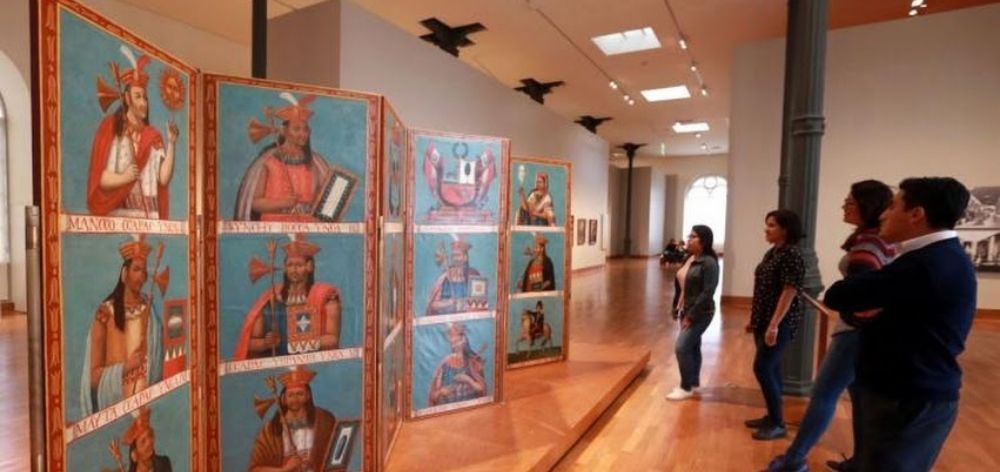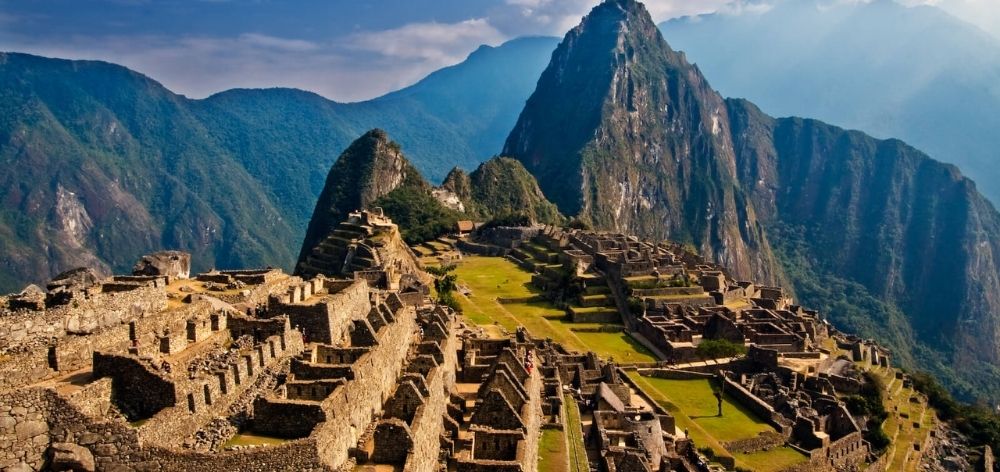By happenstance —or mere colonization— current architectural ideals emanate from western schools of thought—namely, Bauhaus prophesying form and function as the “E=mc2” of all things design. It always bemused me how most architectural faculties leave other traditions, techniques, and images behind in favor of the purportedly superior values of the Gropius-founded school. And so, when traveling to Peru, this reexamination of the design academia rendered into a straightforward question: What could we learn from Inca architects?
You might be interested in: Cultural Tour in Peru.

It pays to visit the Larco Museum or MALI (Museo de Arte de Lima) to mine an overview of the design history of Peru. There, one comes to find that the oldest city in the Americas was once a bustling metropolis on the coast of Peru (Caral, if you’re interested in further googling) five thousand years ago. With this much-accumulated knowledge, dozens of later civilizations developed their own aesthetic sensibilities, each with a different approach to materials, use of space, decor, and function.
Thus, Inca architecture does not necessarily represent the summation of their predecessors; in a way, their style was one of the many expressions conceived in pre-Columbian Peru.
But back to our initial query: What can we learn from the stroke of Inca architects? Well, we could probably talk endlessly about the hydraulics powering the “showers” in Machu Picchu, their immaculate mortar-free masonry work, or the complex road system tethering the largest empire in the Americas. Still, given the current green yearning from today’s architects, I want us to get into how Inca buildings intertwine with nature instead of parting away from it, and to do so, we need to understand their terraces.
If Romans perfected the arch, Incas perfected terraces. And contrary to popular belief, they were more than sole agricultural devices. They were a pivotal hallmark in the Inca architectural catalog, one in which landscaping and civil engineering interweave to provide buildings with sturdy foundations and leveled out terrains capable of withstanding landslides and one of the most ferocious rainy seasons. And the proof is in the pudding: even after five hundred years of abandonment, these structures have endured intact.
Check our Cultural Trip Itineraries.

Engineering aside and back to design chatter, these andenes (Spanish for platforms) enthrall me for what can be narrowed down to two premises. The first is how the terraces served as vertical utilitarian gardens —I repeat, utilitarian gardens. And the second, how they were traced, seizing on the already present geological features. They did not engulf the environs; they mimicked and capitalized them. In a way, Inca architects didn’t consider nature to be the nemesis of the man-made but a partner in the design process.
And so, citadels, temples, and monuments were carved in concordance with the already present scenery. Mountains were, by their very nature, mighty, aesthetically gratifying, and deserving of adoration. Their polytheistic religion was nothing but nature worship: The Sun (Inti), Moon (Quilla), Mother Earth (Pachamama), and Mother Ocean (Qochamama), were some of the deities in the Inca pantheon. Thus, by extension, architecture developed a harmonious relationship with the environs. And isn’t this the reason behind the ethereal beauty of Machu Picchu?
We, in the West, are just unveiling the restorative powers of Mother Earth. Our psyche is not alien to nature; we’re one with nature. If anything, our architectural endeavors should reflect that. And if we’re diving into sustainable and foliage-abundant design, maybe we could take a lesson or two from the Inca civilization.
You might be interested in: ABC to a safer and more conscious trip to Peru
Are you interested in cultural travel and art tours? Here, at Terra Explorer, we’ve partnered with the most outstanding prodigies in fashion, art, and design to deliver custom-made experiences to travelers like you. Contact us, let’s craft the most stunning itinerary.
To ensure the well-being and safety of our travelers and staff throughout our operational chain, Terra Explorer will comply with the health and safety measures and protocols established by the Peruvian Association of Adventure Tourism and Ecotourism (APTAE), and implement the Covid-19 health and safety guidelines for adventure tourism developed by the Adventure Travel Trade Association (ATTA).
Our experiences are designed considering the least possible exposure, where the final destinations are usually remote places. By their very nature, our adventure activities are considered to be low risk, mainly because they are performed outdoors where ventilation is constant and making it easy to achieve social distancing.
During these times we are working together with a small staff of honorable people who have been part of the Terra Explorer family for many years. They and their families are aligned with the established health and safety measures. Employing these staff members also seeks to reactivate the local economy.
We guarantee a safe, soul-fulfilling trip to all our travelers for whom we make these adventures possible.
Terra Explorer will strictly comply with the safety, cleaning, and hygiene protocols during our internal processes, third parties, and throughout your trip. This involves:
Follow the instructions related to health and safety given by the Terra Explorer team and your guide, before and during your trip.
Stay home if:
With the intention of delivering the most flexibility at the time of confirming your trip, we will determine the amount of the initial deposit individually and according to your itinerary characteristics.
Secure your trip with a deposit and pay the rest in one or more payments, at a time that suits you best. Please make sure you adhere to our policy and pay in full at least 31 days prior to your trip date.
If you need to cancel your trip, we will apply the following flexible policies.
For more detailed information on our terms and conditions and Covid-19 policies, please contact us at [email protected]